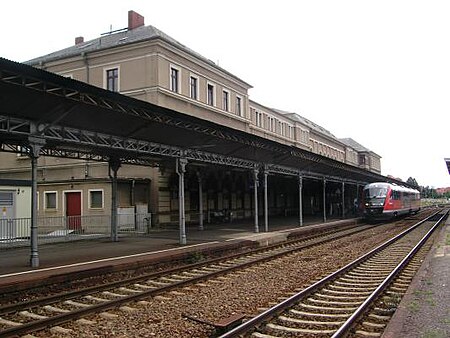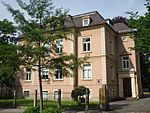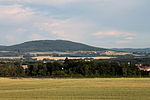Bautzen (German pronunciation: [ˈbaʊ̯t͡sn̩] (listen)) or Budyšin (Upper Sorbian pronunciation: [ˈbudɨʃin] (listen)), until 1868 Budissin, is a town in eastern Saxony, Germany, and the administrative centre of the district of Bautzen. It is located on the Spree river, is the eighth most populous town in Saxony, and is the seat of Saxony's largest district. Bautzen lies in the bilingual Sorbian settlement area (Serbski sydlenski rum) of Lusatia, and is Lusatia's third-largest town after Cottbus and Görlitz, as well as the second-largest town in Upper Lusatia.
The town lies in the hilly Upper Lusatian Gefilde (Hornjołužiske hona), a part of the northwesternmost foothills of the Sudetes, just north of the Lusatian Highlands. Bautzen is the first larger town on the Spree River (Spree→ Havel→ Elbe→ North Sea), and the Bautzen Reservoir (Budyska rěčna zawěra) lies in the north of the town. In 2021, Bautzen had a population of around 38,000.
Although Görlitz is larger, it is Bautzen that is regarded as the historical capital of Upper Lusatia. Bautzen is the political and cultural center of the entirety of the Slavic minority of the Sorbs (Upper and Lower), although Lower Lusatia and the Lower Sorbian-speaking Sorbs have an own, second center, which is Cottbus. About 10 percent of Bautzen's population is Upper Sorbian-speaking. The use of the language is more widespread in the countryside surrounding the town than in the town itself. Bautzen is the seat of several Sorbian institutions like the Domowina, the German-Sorbian People's Theater (Němsko-Serbske ludowe dźiwadło), and Sorbian Broadcasting (Sorbischer Rundfunk, Serbski rozhłós).
From 1346 until 1815, the town was a member of the Lusatian League. The Bautzen Wenceslaus' Market (Bautzener Wenzelsmarkt, Upper Sorbian: Budyske Wjacławske wiki) is Germany's "oldest christmas market mentioned in a chronicle". Asteroid 11580 Bautzen is named in honour of the city.










